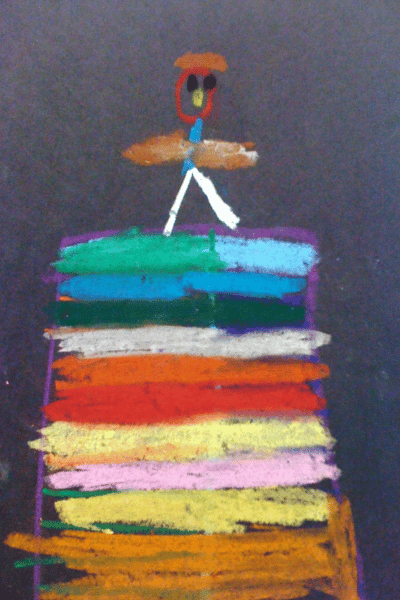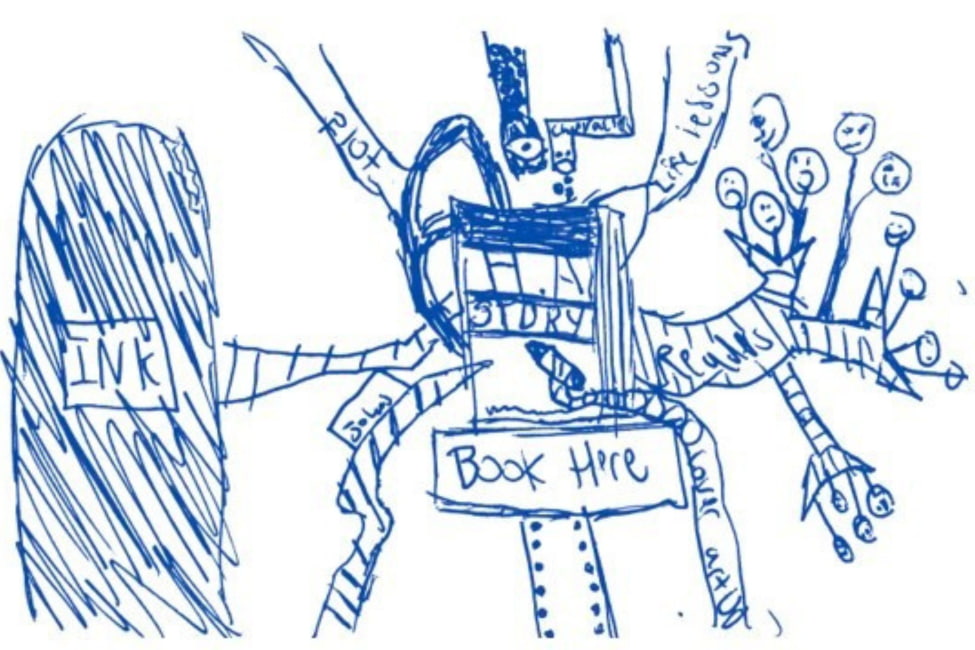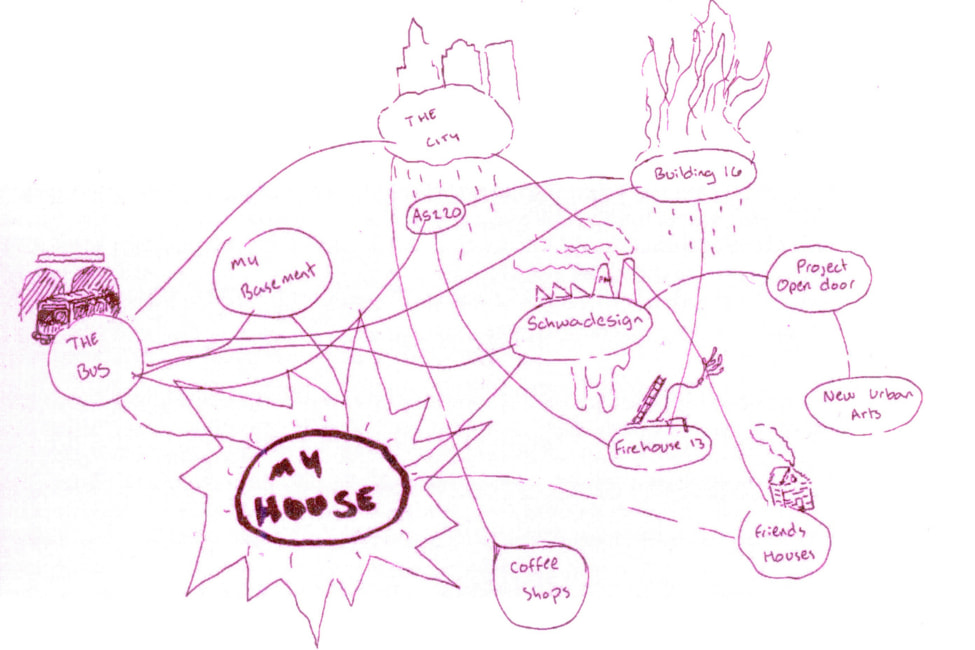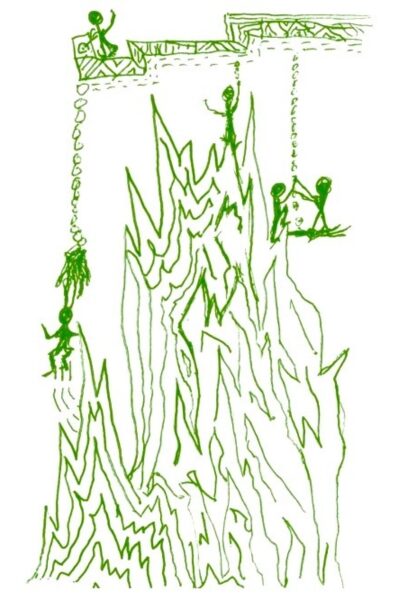A visual experiment to get you thinking about what facilitates and what limits who gets to enter, belong, and contribute in the field of arts and culture.
To get you thinking, try this visual experiment.
Take a look. We asked people of all ages to illustrate the idea of opportunity structures. Next, we explained that they were “what allows/prevents you from being the creative person–artist, musician, writer, inventor—that you want to be.”
Drawing 1
Firstly, this 3rd grader’s portrays the thrill of having an entire box of pastels. It is a portrait of the joy and possibility that opportunity structures can release.
Where and how do you create that energy with and for the people that you serve?

Drawing 2
Secondly, an eighth grader draws a cartoon for a book writing machine that would make him an automatic author. His machine has a mechanical ink tank and a pipeline for plot. Still, he’s absolutely clear that some of the opportunities he needs are life lessons and crowds of readers.

So, ask yourself two questions. “What human opportunities are you building and making widely and equitably available? Who gets audiences, mentors, role models, teachers, and coaches?”
Drawing 3
Thirdly, a high schooler was asked to draw. When asked about what allows him to be creative, he diagrammed his city. He showed his city’s investment in a linked infrastructure of creative youth development organizations facilitated his becoming an artist.

Opportunity structures are more powerful when they are networked.
So, how do you or your organization create connected and sustained pathways to creative work? How are you building a creativity zone with links across ages and places?
Drawing 4
Fourth, we see a visualization created by both an adult and student working together to picture how many people have ideas about different ways that would let more and more people climb up to imagining and making and performing.

How do you – or how does your organization listen for new ideas about building opportunities?
Your Visual Experiment
Lastly, think about the work you do.
With the other’s experiments in mind, for a day, keep two lists:
- Where have you, your organization, and/or your program(s) built opportunity structures that facilitate who can apply, enter, belong, contribute, and be recognized?
- Where do you still have work to do?
Finally, for a bonus challenge, try your hand at visualizing your organization as a road map, a board game, or a landscape of dreams or a giant doodle. Note where opportunity structures are strong. Identify places where they could exist but are missing. Identify where there are obstacles to entry, promotion, belonging, and flourishing. Lastly, lean into visualizing opportunity at your organization, you’ll be surprised what all you discover!



